Matt Rees's Blog - Posts Tagged "caravaggio"
Signing up
 A book takes a long time to write, and then it takes a while to sell. And another while to sell in another country, and another after that. So a writer’s smile spreads across time.
A book takes a long time to write, and then it takes a while to sell. And another while to sell in another country, and another after that. So a writer’s smile spreads across time.My long-term grin widened this weekend, when I signed with my UK publisher for my next two books. Not only because Atlantic, the excellent publisher which has brought out all four of my Palestinian crime novels, bought my next books. But because Atlantic is launching a very exciting new imprint called Corvus.
The new imprint is headed by Nicolas and Anthony Cheetham, a father and son team who made Quercus such an important imprint. They’ve taken on my next book MOZART’S LAST ARIA, which is already completed and being edited in New York by the delightful Claire Wachtel at HarperCollins, and the novel I’m currently writing, which has the working title CARAVAGGIO ON FIRE. It’s about the Italian artist who, incidentally, is thought to have died 400 years ago on Sunday.
Writers will know what I mean when I say that signing the contract is a wonderful marker, but also similar to many other things in a writer’s life – it seems like a big milestone, but no one’s around to witness it except you, so you have to go inside yourself to enjoy the moment.
Read the rest of this post on my blog The Man of Twists and Turns.
Published on July 22, 2010 02:10
•
Tags:
after-sex, anthony-cheetham, atlantic-books, brooke-shields, caravaggio, caravaggio-on-fire, claire-wachtel, contracts, corvus, crime-fiction, greece, harpercollins, historical-fiction, mozart, mozart-s-last-aria, nicolas-cheetham, palestine, publicity, publishing, the-collaborator-of-bethlehem, thomas-m-kostigen, writing
In between the drafts
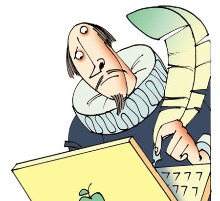 Rock musicians like to note that, had they not discovered their talents for destroying ear-drums, they’d have been criminals. It adds some edge to their pampered personae. Here’s my claim to edge: had I not been a writer, I’d have been locked up long ago, but not in a jail. At best I’d have been sedated.
Rock musicians like to note that, had they not discovered their talents for destroying ear-drums, they’d have been criminals. It adds some edge to their pampered personae. Here’s my claim to edge: had I not been a writer, I’d have been locked up long ago, but not in a jail. At best I’d have been sedated.I know this for sure, because when I’m between drafts of a novel I feel the old madnesses creeping up on me. The dark resentments whose origins I can’t quite nail down. The tension around the center of my chest and the heavy breathing and the tight jaw and the voice in my head telling me this isn’t fair, whatever it is. The flickering fantasies penetrating my mind when it lacks the focus that otherwise keeps it calm.
My wife sees all this before I do, at least consciously. “Maybe you ought to work on something else while you’re waiting to start a new draft,” she says, gentle and delicate, as if she were waiting for me to respond with an angry “I’m all right, dammit."
I have to take a break, you see, because writing a novel requires for me at least 10 drafts. Read a book 10 times straight and see if you don’t get bored with it. Or really pissed off.
So when I get through a draft, I take a week or so before I get back into it. As the end of the draft approaches, I start to fret about that week. I can’t take an actual vacation, because I always tell myself that I don’t know precisely when I’ll reach the end of the draft and therefore I can’t book a trip in advance. I try to line up some reading related to the subject of the book, but sometimes the books turn out to be duds or I’m done with them in a day and a half.
This time, as I take a break between drafts of my novel about the great Italian painter of the early seventeenth century, Caravaggio, I find myself sweating it out in the desert heat of Jerusalem. Enervating, indeed. I’m already a little fevered in any case, because I’ve been deep in the psyche of Caravaggio, who was both a brilliant artist and a duelist with an explosive temper.
Read the rest of this post on my blog The Man of Twists and Turns.
Published on August 13, 2010 01:01
•
Tags:
caravaggio, crime-fiction, gaza, jerusalem, meditation, plays, playwright, writing, writing-life
Going historical
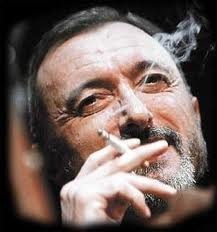 Writing of the disdain expressed for genre novels by critics, Raymond Chandler said that there were just as many bad “literary novels” of the type favored by critics as there were bad genre stories – except that the bad literary novels didn’t get published. In other words, there’s nothing inherent in so-called genre fiction that makes it lesser than “literary” fiction.
Writing of the disdain expressed for genre novels by critics, Raymond Chandler said that there were just as many bad “literary novels” of the type favored by critics as there were bad genre stories – except that the bad literary novels didn’t get published. In other words, there’s nothing inherent in so-called genre fiction that makes it lesser than “literary” fiction.Chandler knew what he was talking about. His great noir novels, such as “The Big Sleep” and “The Long Goodbye,” are must-reads for anyone who wants to know how to build a sentence and a voice, how to create an image that won’t fade a few pages on, how to make people want to read it all over again. His contemporaries in the “literary” field who were more favored by the highbrow critics of his time are these days consigned to the dustbin of college literature courses. (If you don’t believe me, tell me when was the last time you reached for a volume by Upton Sinclair or Pearl Buck?)
But historical fiction is back. Ever since “The Name of the Rose” (published in English in 1983), the genre has accrued greater legitimacy. Last year’s Booker Prize went to a historical novel (“Wolf Hall”) and this year’s looks likely to go to “The Thousand Autumns of Jacob de Zoet” (do an internet search for its author David Mitchell and “genius,” and you’ll see why.)
Even poor old Alexandre Dumas and the swashbuckler have been returned from their long-ago burial under a mound of critical invective. In the last decade or so, Dumas has found his way into the title of a novel by Arturo Perez-Reverte, one of the most notable historical novelists of our time. Perez-Reverte can buckle a swash in the form of his Dumas-derived Captain Alatriste series, but he also has enough modern perversity for one of his novels to have been adapted for the screen by Roman Polanski. (That novel, “The Club Dumas,” even included a reference to Eco, “the professor from Bologna,” in a nod to his role in legitimizing the genre.)
Read the rest of this post on my blog The Man of Twists and Turns.
Published on September 01, 2010 00:06
•
Tags:
alan-furst, alexandre-dumas, arturo-perez-reverte, barbara-nadel, barry-unsworth, caleb-carr, captain-alatriste, caravaggio, crime-fiction, david-mitchell, hilary-mantel, historical-fiction, j-sydney-jones, literary-fiction, mozart, mozart-s-last-aria, new-york, omar-yussef, palestinian, pearl-buck, raymond-chandler, sacred-hunger, the-big-sleep, the-club-dumas, the-long-goodbye, the-name-of-the-rose, umberto-eco, upton-sinclair, west-bank, wolf-hall
Gentleman and thug: researching my new historical novel
 One of the great pleasures of novel-writing is the research which, for almost every book, ought to bring the writer to investigate different areas of inquiry. To become a swift expert in something others might spend all their lives studying.
One of the great pleasures of novel-writing is the research which, for almost every book, ought to bring the writer to investigate different areas of inquiry. To become a swift expert in something others might spend all their lives studying.That’s why I’ve taken up my sword.
I’m working on a historical novel about the great Italian artist Caravaggio. That has meant learning to paint with oils, which has been even more enjoyable than learning piano while writing MOZART’S LAST ARIA, the novel I have coming out in 2011. But Caravaggio wasn’t only a painter. He was also infamous for killing a man in a rapier duel.
Hence my visit to the Academy of Historical Fencing on my recent trip to the UK, where I learned that the rather dandified image of dueling is somewhat over-romanticized. “You could fight like a gentleman or like a thug,” says Nick Thomas, one of the brothers who founded the Academy. “But it was all about killing, in the end. So it could be said that the thug predominates.”
Nick is a delightfully obsessed martial arts fan who learned Renaissance Italian so he could translate his favorite fencing manual (Ridolfo Capo Ferro’s 1610 masterpiece the “Gran Simulacro”) and has won many European rapier competitions. By day he and his brother write zombie fiction (their latest is about "Sherlock Holmes and the Zombie Problem"). With several friends, he founded the Academy in 1996. They run classes in Bristol, England, and my hometown of Newport, Wales. So after putting my son to bed, I picked up my Dad in my rental car and zipped out to Caerleon University, where Nick awaited in the gym with his swords and daggers.
Read the rest of this post on my blog The Man of Twists and Turns.
Published on November 04, 2010 07:28
•
Tags:
academy-of-historical-fencing, bristol, caerleon, caerleon-university, caravaggio, crime-fiction, england, fencing, historical-fiction, mozart-s-last-aria, newport, nick-thomas, rapier, renaissance-italy, ridolfo-capo-ferro, sword-fighting, wales
Ikea and the Crime Writer
 There are many theories as to why Scandinavian crime writers prosper in the bestseller lists. But I know why it is. Ikea.
There are many theories as to why Scandinavian crime writers prosper in the bestseller lists. But I know why it is. Ikea.I just bought a new set of Ikea shelves for my office. I’ll get into exactly how that has altered the configuration of my workspace, but at this point let me just note that it makes my writing room seem a thousand times more orderly, less cluttered. As any feng shui expert would tell you, a disorganized room will yield fractured thoughts and fill the mind of its occupier with distraction. For a writer who needs to focus on his manuscript and whose manuscript requires a consistent vision, that’s a bad thing.
So these shelves, produced by a company based in Sweden, have no doubt created the clean, neat spaces Scandinavian crime writers like Henning Mankell and Jo Nesbo need to write their clean, neat stories.
I was in need of a little neatening in my office, because my research had started to create clutter. There were piles of books on Mozart, music and the Austrian Empire related to my forthcoming historical crime novel MOZART’S LAST ARIA. Then new mountains of books and documents for CARAVAGGIO ON FIRE, my novel about the Italian artist which will be out in a year and a half.
But that’s not all. For my Mozart book, I learned the piano. So suddenly there’s a piano in my office. For Caravaggio, I’ve been learning to paint with oils, so there’s an easel and painting implements and canvases jostling for space with my guitars and bass guitars and amplifiers (those aren’t research; it’s a hobby).
Add to that the large numbers of foreign editions of my books I’m delighted to receive when I’m published in Indonesia and Romania and Iceland, but which I’m unable to give to friends due to the fact that I only know one Icelander, my Romanian landlord already read the book, and the only Indonesian I know is my editor and of course he has already read the book, too.
Read the rest of this post on my blog The Man of Twists and Turns.
Published on December 09, 2010 01:07
•
Tags:
caravaggio, caravaggio-on-fire, crime-fiction, feng-shui, henning-mankell, iceland, ikea, indonesia, italy, jo-nesbo, mozart, mozart-s-last-aria, romania, sweden, the-guardian, writers-rooms, writing
Meditating the next novel
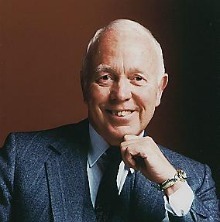 I’ve written here in the past about how I use meditation techniques to get into the zone for writing every day. But now meditation seems to have helped me come up with the idea for my next novel.
I’ve written here in the past about how I use meditation techniques to get into the zone for writing every day. But now meditation seems to have helped me come up with the idea for my next novel.Last week I was in a rotten mood. My son woke up too early. I hadn’t slept well. The boy was whiny and tossing his Cocoa Crispies on the floor. The crema on my espresso was too thin. Oh, blah blah blah. I packed Cai off to kindergarten and lay down to meditate, as I do before I begin work every day (I used to meditate after I finished work, but I often just fell asleep, so now I do it earlier).
I focused on creativity and positivity as I meditated. I started to get ideas about… well, I’m not going to tell you what the novel’s about before I write it. Let’s just say the idea of happiness and brain function – the very things behind successful meditation – led me into a historical thriller plot that I will start researching as soon as my current project, a novel about the Italian artist Caravaggio, is completed.
What neuroscience tells us about meditation (and any neuroscientist – she knows who I mean – reading this ought to refrain from writing comments about how dumb I’ve made this sound) is that positivity rewires the brain to be yet more positive. My meditation in question proves that in a small way. I was far from positive until I began the meditation. Suddenly I was as positive as I can be – coming up with a new novel isn’t something that happens every day.
Well, actually it does happen quite frequently (for example, just now I’m thinking, “What about a mystery novel set in the Swinging Sixties in which Benny Hill is the detective”…). But those ideas don’t carry the same element of certainty that this would be the novel for me to write. I had been juggling at least five ideas for my next book. None of them had struck me as absolutely right on a deep level. Dare I say it in these cynical times, on a spiritual level. They all had something logically right about them, but they didn’t feel right.
To an extent, I owe this idea of positivity to some recent chats with Tony Buzan, author of The Mind Map Book and other volumes. We spent time together at a recent book festival in Dubai. Tony’s main point is that we only use a tiny fraction of our brain’s capacity. About 1 percent. His work is designed to enable us to increase that percentage.
Read the rest of this post on my blog The Man of Twists and Turns.
Published on April 07, 2011 00:24
•
Tags:
benny-hill, caravaggio, meditation, mind-maps, novels, tony-buzan, writing
Book publicity: the full set
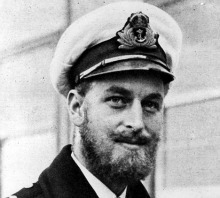 In the Royal Navy, there’s only one kind of facial hair allowed. British Tars are either clean shaven or they sport a beard, known in the service as a “full set.” The antipathy to the mustache is no doubt because of its predominance among the rival landlubber officer class (although it could’ve later been its association with a different kind of “sailor.”)
In the Royal Navy, there’s only one kind of facial hair allowed. British Tars are either clean shaven or they sport a beard, known in the service as a “full set.” The antipathy to the mustache is no doubt because of its predominance among the rival landlubber officer class (although it could’ve later been its association with a different kind of “sailor.”)Book authors now fall into similar categories. There are those who do nothing online and those for whom each book must be accompanied by the full set.
Those who do nothing are usually writers who were already well-known before the web became so important. They don’t need to be online, so they aren’t. Or they’re too old to get into a new kind of writing. Me, I have the internet full set. Here’s what I’ve got going on already for my new book, which is out in two weeks in the UK:
First there’s the updated website, www.mattrees.net. The website is, of course, the equivalent of facial stubble. Everyone’s doing it, even those who don’t get around to growing a full set. Some of them are pretty rotten and look like they’d itch… You can tell that the writer only sports the stubble because he thinks he has to – a fashion necessity. He’d get rid of it in a moment if the fashion changed.
I’m very involved in the design of my site. I put lots of Extra Features in it. You can hear much of the music from MOZART’S LAST ARIA, my new book. (It’s a historical thriller in which Mozart’s sister tries to uncover the secrets of the great composer’s death.) I have a couple of brief essays about how I came to write the book; how I researched it; how I structured it to mirror my favorite Mozart piano sonata. A photo tour of all the real locations featured in the novel, and images of many of the real characters from the book.
Read the rest of this post on my blog The Man of Twists and Turns.
Published on April 21, 2011 04:18
•
Tags:
caravaggio, crime-fiction, michael-caine, mick-jagger, mozart-s-last-aria, nannerl-mozart, orit-wolf, publicity, richard-burton, royal-navy, video, wolfgang-mozart, writers
Author's dilemma: What's next?
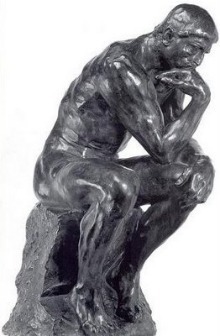 Damn, I’ve done it again. Finished a novel, sent it to my publisher…Oh, dear. What’s next?
Damn, I’ve done it again. Finished a novel, sent it to my publisher…Oh, dear. What’s next?If I write that this is THE authorial dilemma, I’m sure I’ll get emails from writers who just can’t finish their book, or from readers who’d like to be writers telling me that I shouldn’t be complaining about such a pleasant quandary.
So let me say that I’m not complaining. Just expressing the slight anxiety that nibbles around my edges when I’m not actually writing, the fear that I’ll lose focus. Because when that happens, the next thing I know I’m growling at my son, driving too fast, and losing my temper in the supermarket checkout line.
You see, I have to be doing something creative or I become a little less human. You might say that I become depressed, I suppose, which is why I find myself infected with some degree of anger. (If, as Freud said, depression is frozen anger, why is it that when I get depressed I also get angry…? Am I only half depressed? Or thawing out?)
So when two weeks ago I sent off the manuscript of my Caravaggio novel to my London publisher, I determined not to fall into the ills that have afflicted me to differing degrees between each book. My wife reminded me to “write something.” Even my three-year-old suggested, “Daddy, you go and work.”
In some ways it was good timing. My new book, MOZART’S LAST ARIA, was coming out in the UK. So I devoted last week to the kind of online publicity activities my generation of writers has to perform, to one degree or another. Video trailers, video readings, blog posts, links and “extra features” deluged my Facebook friends, my Twitter followers, my blog followers.
But those things won’t cut it creatively. First, they aren’t the kind of “creative” activity I’m talking about. Second, you don’t see the results right away. Spend a day networking socially and at the end of it you feel like you’ve been at a very long cocktail party: you might have a few business cards in your pocket, but your face hurts from (virtual) smiling and you’re unconvinced that it’ll sell any books for sure.
So I was lucky that I had a couple of genuinely creative things to keep me rolling. A pair of short scripts for a nascent film project. A short story about my Palestinian detective Omar Yussef (which I posted online free yesterday). This was just about enough to see me through the between-books blues.
Read the rest of this post on my blog The Man of Twists and Turns.
Published on May 13, 2011 00:58
•
Tags:
between-novels, caravaggio, caravaggio-s-madonna, crime-fiction, mozart-s-last-aria, omar-yussef, palestine, palestinians, writing
My Caravaggio novel 'superb tale of intrigue and wrong doing'
 My novel about the great Italian artist Caravaggio A Name in Blood won't be out in the UK until July 1. Still the review copies are out there and the It's a Crime blog gets in first with a very positive mention.
My novel about the great Italian artist Caravaggio A Name in Blood won't be out in the UK until July 1. Still the review copies are out there and the It's a Crime blog gets in first with a very positive mention. A Name in Blood is a superb tale of intrigue and wrong doing in Renaissance Italy from Matt Rees, author of the award winning Omar Yussef crime series.
There's also love and art in the novel. But I'm happy for a crime blog to pick up on the intrigue and wrong doing!
Published on May 09, 2012 02:59
•
Tags:
caravaggio, crime-fiction, historical-fiction, renaissance, reviews
Me and St. Catherine: Why I Wrote a Novel About Caravaggio
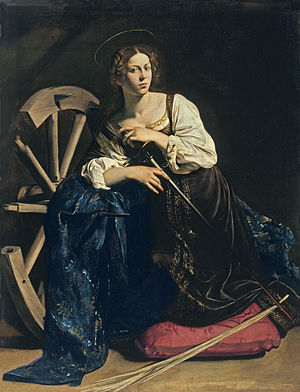 On the upper floor of the Museo Thyssen-Bornemisza in central Madrid, I wandered into a broad room where the masterpieces were arrayed like chocolates in a box. Just as with an assortment of sweets, I knew immediately and innately which one attracted me. I stepped into the arms of Caravaggio’s Saint Catherine of Alexandria. She still hasn’t let go.
On the upper floor of the Museo Thyssen-Bornemisza in central Madrid, I wandered into a broad room where the masterpieces were arrayed like chocolates in a box. Just as with an assortment of sweets, I knew immediately and innately which one attracted me. I stepped into the arms of Caravaggio’s Saint Catherine of Alexandria. She still hasn’t let go.I was in Madrid on a book tour for the Spanish translation of the first of my Palestinian crime novels. The Thyssen is just across the wide, busy Paseo del Prado from the immense museum of that name. It’s a building with two wings: a traditional classical palace in burnt sienna and pink stone; alongside a block of bright white louvered walls and angled blue-glass rooflights, like an old auto factory transported to a sci-fi future. I had no idea what awaited me inside. No idea that my novel A NAME IN BLOOD, which is published in the UK in a few weeks, would grow out of it.
The Caravaggio works I had previously seen in London and New York had impressed me. I was aware of the conventional summary of the stylistic revolution he wrought: to fill his canvasses with darkness and, with a strategically placed lantern, to bring the central action shining out of the shadows. That technique has been a major influence on filmmakers like Scorsese and almost every professional photographer, which is why Caravaggio’s four-hundred-year-old paintings look so modern. I knew something about his life too, though largely through the weird distortions and art-house tedium of Derek Jarman, having seen the British director’s Caravaggio film in college. As a writer, however, I’ve found a confluence of impressionability and idea lies behind every novel, so that only at one given time can you write a particular novel. A few years previously, I might’ve seen Saint Catherine, considered her for a moment, then moved on, as I had done when I saw Caravaggio’s The Supper at Emmaus in London’s National Gallery. But, for some reason, when I entered her room at the Thyssen and she spoke to me, I was listening.
I stayed in that room a long time. I couldn’t say quite how long. But it was at least an hour. The other paintings held my attention a matter of moments. I can’t remember them. (I’ve had similar experiences when I’ve traveled to see Caravaggio’s art around the world since then. No artist has such a capacity to make everything else in a gallery ignorable as Caravaggio has). In the Thyssen, I recall that the walls were of a beige rough fabric, a little like delicate sackcloth. The ceiling was white. Details as scant as you might retain from love-making. You might forget your mood or the immediate surroundings, but you’d have a clear picture of the way she looked at you or the feel of her hand on the back of your neck. Of Catherine, I remember everything. Even things that weren’t on the canvas.
The eyes of Caravaggio’s saint were possessive, grasping and sensual, clandestine and forbidden. For much of the time I was with her, we were alone. It felt as intimate as the languor after an act of love. There’s a question in that post-coital moment and Catherine asked it of me: Is this the last time? Will I see you again? Do you want to know more about me and where I come from?
Eventually I tried to leave the empty room. In her face I saw a plea. As if she wanted me to know that by leaving I would abandon her to her fate, represented by the spiked wheel on which she leaned (where the saint was tortured, before she was dispatched with the sword whose shaft she fondles.) What’s so compelling (and in his day was controversial) about Caravaggio is that he didn’t expect the saint’s suffering to be enough to keep you on her side. He gave her the sexual magnetism of Fillide Melandroni, the whore he used as his model.
The hold Caravaggio subsequently took on me amounted to what many people would call an obsession. I prefer not to use that term, because it implies a degree of madness and the inability to see when you’re mistaken about something. A writer needs to know when he’s gone wrong. Still, I traveled all over Europe and America to see Caravaggio’s works. I learned to paint with oils, to fight with a rapier. I grew a beard like the one Caravaggio sported just before his death at age 39. I did a few others things that paralleled the artist’s life and which were too intimate, shameful, or mystical to be recounted here. So, go ahead, call it an obsession.
Published on June 05, 2012 02:23
•
Tags:
baroque, caravaggio, historical-crime, historical-novel, renaissance



